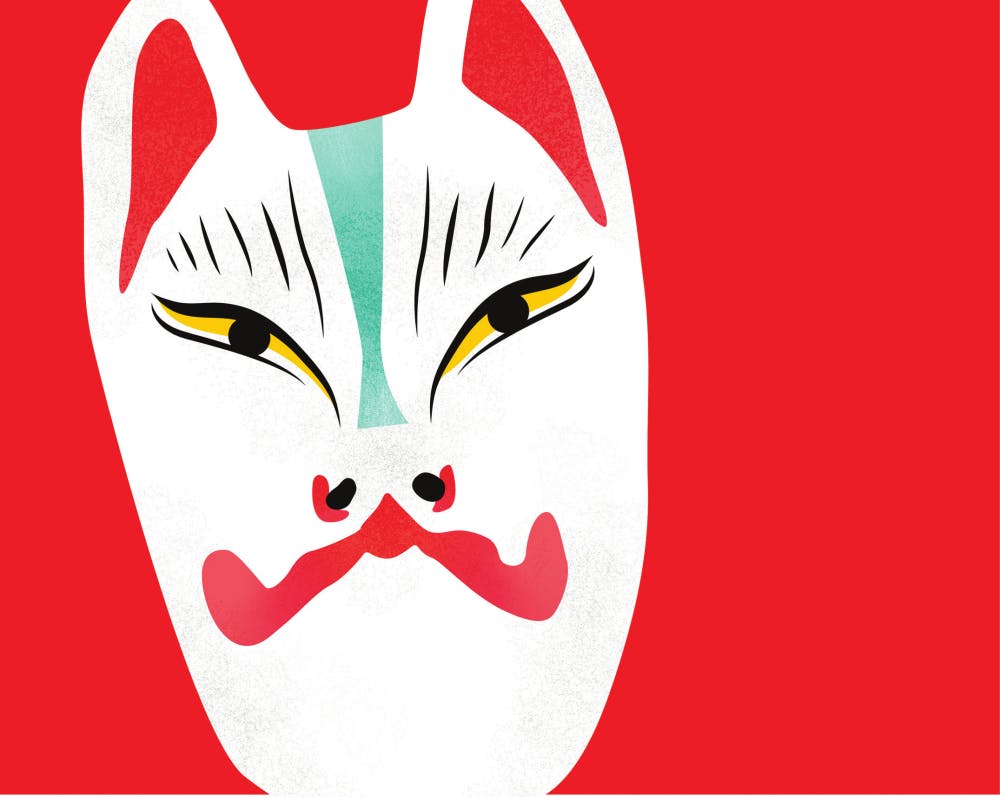Illustration by Emily Schoonover
I arrived at the Columbia Museum of Art with the full intention of seeing a Vincent Van Gogh exhibit, but I’d arrived about two months too early; after the guy at the front desk gave me a confused look, he pointed directly behind me to a poster donning Van Gogh’s infamous portrait...and the words: “Exhibit Coming October 4th.”
“Oh. So what else is there to see?”
When he recommended Mimi Kato, I wasn’t sure what to expect. But I was met with a bold self-portrait series in which the artist challenges the power and femininity of women in the workplace. Using photography and computer editing, Kato combines elements of bold, crass humor, traditional Japanese art landscapes and shocking archetypes to display the subdued women of Japanese corporations in a free wilderness of their own.
While the initial three-panel scenes of "One Ordinary Day of an Ordinary Town" are certainly eye catching on their own, taking inspiration from the Edo-period work Scenes in and around the Capital and turning it into a visual overload of modern Japanese tourism and city life, it was the narrative of her Wild Corporation series that was hard to turn away from.
Basing the tropes of the narrative on her upbringing in Nara, Japan, Kato reflects the sexist corporate structures of Japan that developed during the twentieth century. The available career paths for women broke down into two choices; Sogo Shoku and Ippan Shogu. While Ippan Shogu found women placed in more managerial positions, Sogo Shoku consisted of “office ladies,” who worked secretarial jobs and poured tea for male superiors with the encouragement of leaving the job when they reached their 30’s, in order to marry and start families.
While the office ladies of Sogo Shoku are known for being subservient and reduced to mundane jobs, Kato calls the office ladies of her work “smart and powerful.” They take back their workplace in the midst of their own environment, despite being still dressed in their assigned uniforms. Kato also expressed her desire to explore why women in workplaces often choose to fight each other, rather than pull together to gain more as a whole. In one portrait, a group office ladies sit in front of a dead grizzly bear in the midst of the woods. One woman, holding a pair of standard-office-supply scissors examines her handiwork in the bear’s wounds, while another woman cries, her face contorted with disgust and sadness at the dead animal before them. Another smears its blood onto her lips, gazing into a compact mirror as though applying lipstick.
In another, aptly titled "One Step Ahead", women stand on the slopes of a snowy hill, those in plaid skirts and yellow shirts screaming out with their hands bound and their hair braids tied together. At the top of the hill, a woman in a blue uniform screams at them defiantly. In the middle of the setting, another woman clad in the blue uniform stands tall, looking into the distance as though she’s figuring out her next move.
As a female viewing Kato’s work, it’s almost impossible not to see yourself reflected in these images. The constant clawing to get ahead, the contorted and dramatic expressions that cry out against the monotonous. It’s hard not to see the reflections of the #MeToo movement as well, whether that was Kato’s intention or not; the idea that women are constantly pitted against each other in the workplace while also being minimized to a pretty face in a pretty uniform, performing delicate tasks as they await their so-called real future within traditional gender roles.
Perhaps every woman needs to embrace the ability to contort against what’s expected of them in society.
More importantly, perhaps every woman should embrace their own wilderness.



